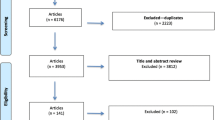Abstract
A two-stage stochastic program is developed for scheduling and allocating cross-trained workers in a multi-department service environment with random demands. The first stage corresponds to scheduling days-off over a time horizon such as a week or month. The second stage is the recourse action that deals with allocating available workers at the beginning of a day to accommodate realized demands. After the general two-stage model is formulated, a special case is introduced for computational testing. The testing helps quantify the value of cross-training as a function of problem characteristics. Results show that cross-training can be more valuable than perfect information, especially when demand uncertainty is high.






Similar content being viewed by others
References
Abernathy WJ, Baloff N, Hershey JC and Wandel S (1973). A three-stage manpower planning and scheduling model—A service sector example . Opns Res 21: 693–711.
Agnihothri SR, Mishra AK and Simmons DE (2003). Workforce cross-training decisions in field service systems with two job types . J Opl Res Soc 54: 410–418.
Bard JF (2004). Staff scheduling in high volume service facilities with downgrading . IIE Trans 36: 985–997.
Bard JR and Purnomo HW (2005). Hospital-wide reactive scheduling of nurses with preference considerations . IIE Trans 37: 589–608.
Birge JR and Louveaux F (1999). Introduction to Stochastic Programming . Springer-Verlag: New York.
Brusco MJ (2008). An exact algorithm for a workforce allocation problem with application to an analysis of cross-training policies . IIE Trans 40: 495–508.
Brusco MJ and Johns TR (1998). Staffing a multiskilled workforce with varying levels of productivity: An analysis of cross-training policies . Decision Sci 29: 499–516.
Burke EK, De Causmaecker P, Vanden Berghe G and Van Landeghem H (2004). The state of the art of nurse rostering . J Sched 7: 441–499.
Campbell GM (1999). Cross-utilization of workers whose capabilities differ . Mngt Sci 45: 722–732.
Campbell GM (2009). Overview of workforce scheduling software. Prod & Inv Mngt 45(2): 7–22.
Campbell GM and Diaby M (2002). Development and evaluation of an assignment heuristic for allocating cross-trained workers . Eur J Opl Res 138: 9–20.
Easton F and Rossin D (1996). A stochastic goal program for employee scheduling . Decision Sci 27: 541–568.
Ernst AT, Jiang H, Krishnamoorthy M and Sier D (2004). Staff scheduling and rostering: A review of applications, methods and models . Euro J Opl Res 153: 3–27.
Hopp WJ and Van Oyen MP (2004). Agile workforce evaluation: A framework for cross-training and coordination . IIE Trans 36: 919–940.
Iravani SM, Van Oyen MP and Sims KT (2005). Structural flexibility: A new perspective on the design of manufacturing and service operations . Mngt Sci 51: 151–166.
Jack EP and Powers TL (2004). Volume flexible strategies in health services: A research framework . Prod Opns Mngt 13: 230–244.
Kao EPC and Queyranne M (1985). Budgeting costs of nursing in a hospital . Mngt Sci 31: 608–621.
Li LLX and King BE (1999). A healthcare staff decision model considering effects of staff cross-training . Health Care Mngt Sci 2: 53–61.
Morton DP and Popova E (2004). A Bayesian stochastic programming approach to an employee scheduling problem . IIE Trans 36: 155–167.
Nembhard DA (2007). Workforce Cross Training . CRC Press: Boca Raton, FL.
Nembhard DA, Nembhard HB and Qin R (2005). A real options model for workforce cross-training . Eng Econ 50: 95–116.
Wallace RB and Whitt W (2005). A staffing algorithm for call centers with skill-based routing . Manuf & Service Opns Mngt 7: 276–294.
Wan L and Bard JF (2007). Weekly staff scheduling with workstation group restrictions . J Opl Res Soc 58: 1030–1046.
Warner DM, Keller BJ and Martel SH (1990). Automated nurse scheduling . J Soc Health Syst 2: 66–80.
Wright PD, Bretthauer KM and Cote MJ (2006). Reexamining the nurse scheduling problem: Staffing ratios and nursing shortages . Decision Sci 37: 39–70.
Zhang X, Chakravarthy A and Gu Q (2009). Equipment scheduling problem under disruptions in mail processing and distribution centres . J Opl Res Soc 60: 598–610.
Zhu X and Sherali HD (2009). Two-stage workforce planning under demand fluctuations and uncertainty . J Opl Res Soc 60: 94–103.
Author information
Authors and Affiliations
Corresponding author
Rights and permissions
About this article
Cite this article
Campbell, G. A two-stage stochastic program for scheduling and allocating cross-trained workers. J Oper Res Soc 62, 1038–1047 (2011). https://doi.org/10.1057/jors.2010.16
Received:
Accepted:
Published:
Issue Date:
DOI: https://doi.org/10.1057/jors.2010.16




